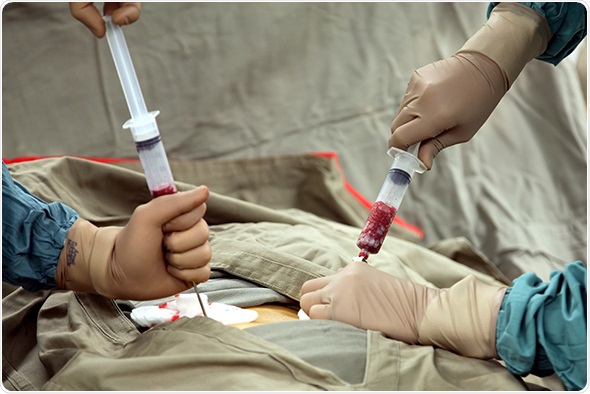New research published in The Lancet Haematology reports that despite huge increases in the use of bone marrow transplant, there is significant underuse in various regions across the world. The high level of unmet need is a consequence of chronic shortages of resources and donors and is putting lives at risk.
Bone marrow (hematopoietic stem cell) transplant is a life saving treatment for patients with blood cancer that replaces blood stem cells lost to disease or chemotherapy. However, for each patient to benefit a matching donor must be found to provide the stem cells for transplant.

Li Wa / Shutterstock.com
Researchers have systematically analysed data collected by the Worldwide Network for Blood and Marrow Transplantation (WBMT) and investigated the link between macroeconomic factors (eg, gross national income and health care expenditure) and transplant frequencies.
They found that the number of bone marrow transplants has increased tremendously from about 10000 in 1985 to more than 1 million by the end of 2012. Transplants were shown to be more common in countries with greater resources and expertise; over half were performed in Europe and only 2% were carried out in the Eastern Mediterranean and Africa. The number of donor transplants is steadily increasing, indicating that full capacity has not been reached and that more transplants would have been performed if suitable donors had been available.
A genetically matched donor can be found within a patient’s family in about 30% of cases, but the remaining 70% rely on a matched volunteer being found from donor registries. Despite an increase in the number of registries, there are still over 37000 patients worldwide waiting for a compatible donor to be found.
Professor Niederwieser summarised “Patients, many of them children, are facing a life and death situation. Ultimately they will die if they cannot get the treatment they need. All countries need to provide adequate infrastructure for patients and donors to make sure that everyone who needs a transplant gets one, rather than the present situation in which access remains restricted to countries and people with sufficient resources”.
It is hoped that these findings will highlight the extent of the unmet need and prompt action to improve donor infrastructure, access for patients and make bone marrow transplant an efficient and cost-effective approach for life-threatening, potentially curable diseases.
Sources:
Gratwohl A, et al. One million haemopoietic stem-cell transplants: a retrospective observational study. The Lancet Haematology 2015; Epub ahead of print. Available at : http://www.thelancet.com/journals/lanhae/article/PIIS2352-3026(15)00028-9/abstract
Further reading
Delete Blood Cancer https://www.dkms-bmst.org/
Anthony Nolan Trust https://www.anthonynolan.org/